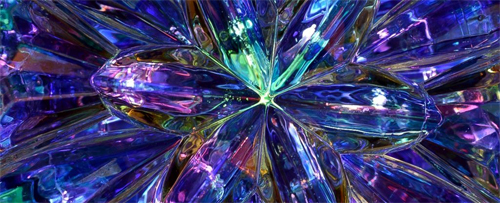For the first time, physicists have controlled the interaction of time crystals
The existence of time crystals – a particularly fascinating state of matter – was only confirmed a few short years ago, but physicists have already made a pretty major breakthrough: they have induced and observed an interaction between two time crystals.

In a helium-3 superfluid, two time crystals exchanged quasiparticles without disrupting their coherence; an achievement that, the researchers say, opens up possibilities for emerging fields such as quantum information processing, where coherence is of vital importance. “Controlling the interaction of two time crystals is a major achievement. Before this, nobody had observed two time crystals in the same system, let alone seen them interact,” said physicist and lead author Samuli Autti of Lancaster University in the UK. “Controlled interactions are the number one item on the wish list of anyone looking to harness a time crystal for practical applications, such as quantum information processing.”
Time crystals are pretty fascinating. They look just like normal crystals, but they sport an additional, peculiar property. In regular crystals, the atoms are arranged in a fixed, three-dimensional grid structure, like the atomic lattice of a diamond or quartz crystal. These repeating lattices can differ in configuration, but they don’t move around very much: they only repeat spatially. In time crystals, the atoms behave a bit differently. They oscillate, spinning first in one direction, and then the other. These oscillations – referred to as ‘ticking’ – are locked to a regular and particular frequency. So, where the structure of regular crystals repeats in space, in time crystals it repeats in space and time.
Theoretically, time crystals tick at their lowest possible energy state – known as the ground state – and are therefore stable and coherent over long periods of time. This could be exploited, but only if their coherence could be preserved in a controlled interaction.
So, Autti and his colleagues from the UK and Finland set up a time crystal playdate. First, they cooled helium-3 – a stable isotope of helium with two protons but just one neutron – to within one ten thousandth of a degree of absolute zero, creating a B-phase superfluid, a zero-viscosity fluid with low pressure. In this medium, the two time crystals emerged as spatially distinct Bose-Einstein condensates of magnon quasiparticles. Magnons are not true particles, but consist of a collective excitation of the spin of electrons – like a wave that propagates through a lattice of spins.
When the physicists allowed the two time crystals to touch, they exchanged magnons – which changed the oscillation to the opposite phase without sacrificing coherence. The results were consistent with a superconductivity phenomenon known as the Josephson effect, in which a current flows between two pieces of superconducting material separated by a thin insulator known as the Josephson junction. These structures are one of several being explored for the construction of qubits, the base units of information in a quantum computer.
It’s only a very simple interaction, but it does open the door to trying to create and control much more sophisticated ones. “Our results demonstrate that time crystals obey the general dynamics of quantum mechanics and offer a basis to further investigate the fundamental properties of these phases, opening pathways for possible applications in developing fields, such as quantum information processing,” the researchers wrote in their paper. “Long-lived coherent quantum systems with tunable interactions, such as the robust time crystals studied here, provide a platform for building novel quantum devices based on spin-coherent phenomena.”
yogaesoteric
February 11, 2021
